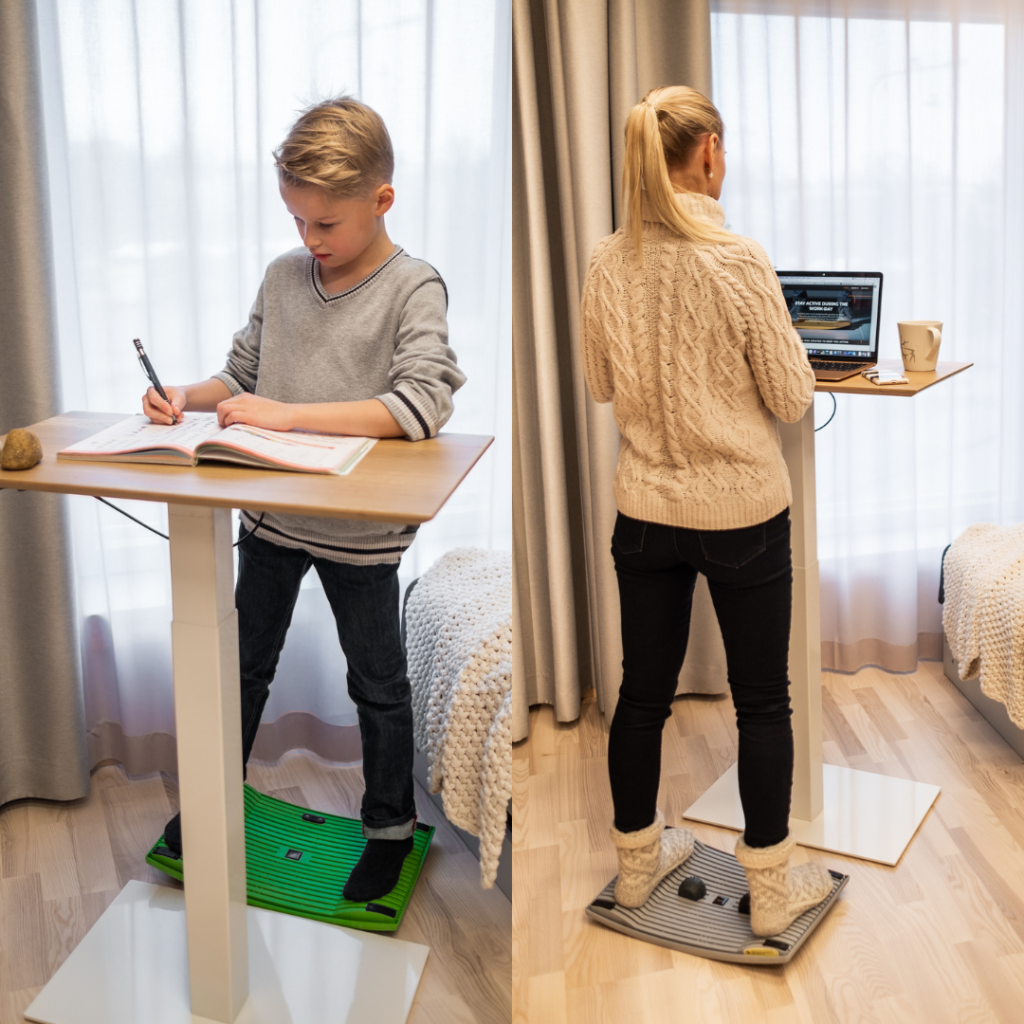Yes, ergonomic furniture can significantly improve student concentration in educational settings. When students use furniture designed to support proper posture and comfort, they experience fewer physical distractions like discomfort and pain, allowing them to focus better on learning activities. Ergonomic solutions that accommodate natural body positioning and movement help reduce fidgeting and restlessness while promoting better blood circulation and oxygen flow to the brain, all of which contribute to enhanced cognitive function and sustained attention.
What is the Connection Between Ergonomics and Student Concentration?
The connection between ergonomics and student concentration lies in how our physical comfort directly influences our cognitive abilities. When students sit in furniture that properly supports their bodies, they can dedicate more mental energy to learning rather than dealing with discomfort.
Proper posture is essential for optimal brain function. When students maintain good alignment, blood flow improves, delivering more oxygen to the brain and enhancing cognitive processes. This physiological connection means that ergonomically designed furniture doesn’t just prevent physical pain—it actively supports better thinking.
The learning environment significantly impacts how students process information. Traditional classroom furniture often forces students into static, unnatural positions that can become increasingly uncomfortable over time. In contrast, ergonomic solutions work with the body’s natural mechanics, reducing the physical and mental fatigue that accumulates during long study sessions.
When students aren’t constantly shifting to find comfort or distracted by stiffness and pain, they can maintain focus on complex tasks for longer periods. This sustained attention is crucial for deep learning, problem-solving, and information retention—all key components of academic success.
How Does Poor Classroom Furniture Affect Student Learning?
Poor classroom furniture creates a cascade of negative effects on student learning, beginning with physical discomfort that directly interferes with cognitive processes. When students struggle with uncomfortable seating, their attention repeatedly shifts from learning content to their physical state.
Common issues include:
- Back and neck pain from inadequate support
- Restricted blood circulation from improper seat height and depth
- Increased fidgeting and movement as students try to find comfortable positions
- Physical fatigue that sets in more quickly during lessons
These physical distractions significantly reduce the amount of focused learning time available to students. Research shows that uncomfortable students may lose up to 40% of their lesson time to distraction and discomfort management behaviors.
Beyond immediate distractions, poor furniture contributes to cumulative issues. Students may develop negative associations with learning environments or specific subjects if they consistently experience discomfort during those classes. This can lead to avoidance behaviors and reduced engagement over time.
For students with existing conditions like ADHD or sensory processing issues, unsuitable furniture can amplify their challenges, creating additional barriers to learning that their peers might not experience.
What Ergonomic Features Support Better Concentration in Students?
Specific ergonomic features play crucial roles in supporting student concentration by creating physical comfort that allows mental focus to flourish. The most effective ergonomic furniture incorporates multiple adjustable elements to accommodate individual student needs.
Height adjustability is perhaps the most important feature, allowing furniture to match students’ varying body dimensions. Properly sized adjustable desks for optimal learning environments ensure students can maintain the optimal 90-90-90 degree posture (ankles, knees, and hips at 90-degree angles) that supports good alignment and reduces physical strain.
Effective back support that maintains the spine’s natural curve prevents slouching and the associated fatigue. When the lower back is properly supported, students can maintain proper posture with less effort, freeing cognitive resources for learning tasks.
Movement opportunities built into furniture design help address students’ natural need for physical activity. Features that allow controlled movement—such as subtle rocking, swiveling, or bouncing—can actually enhance focus by providing an outlet for excess energy without disrupting learning.
Properly designed desk surfaces that tilt for different activities (reading versus writing) reduce neck strain and support visual focus. The ability to adjust workspace configuration based on the task helps maintain optimal ergonomics throughout various learning activities.
How Can Active Seating or Active Standing Improve Student Engagement?
Active seating or active standing solutions transform traditional static sitting into a dynamic experience that supports both physical health and mental engagement. These innovative options allow controlled movement while seated or while standing, addressing the fundamental mismatch between children’s natural energy and traditional classroom expectations.
The primary benefit comes from providing an appropriate outlet for physical energy that would otherwise manifest as disruptive fidgeting or loss of focus. When students can bounce, rock, or otherwise move subtly, they can satisfy their body’s need for movement without interrupting their learning process.
This approach is particularly valuable for students with attention challenges or high energy levels. Rather than forcing these students to suppress their natural physical tendencies (which consumes significant mental energy), active seating or active standing harnesses movement to support focus. The physical activity helps regulate sensory input and can improve cognitive processing.
Active seating options include:
- Wobble stools that allow gentle tilting in all directions
- Rocking chairs designed for educational settings
Active standing options include:
- Standing desks with balance boards or active boards for active movement while studying
These solutions help maintain proper blood circulation and muscle engagement, preventing the stiffness and discomfort that often lead to distraction. The constant small adjustments required to maintain balance also promote core strength development and better posture habits.
What Research Supports the Benefits of Ergonomic Furniture in Educational Settings?
A growing body of research demonstrates clear connections between ergonomic furniture and improved educational outcomes. Studies consistently show that when students use properly designed furniture, they demonstrate measurable improvements in attention span, on-task behavior, and learning retention.
Research from multiple educational contexts shows that ergonomic interventions can increase time-on-task by up to 30% compared to traditional furniture configurations. This substantial improvement directly translates to more efficient learning and better academic performance.
Comparative classroom studies have documented reduced fidgeting and distraction behaviors when ergonomic furniture is introduced. Observational data consistently shows that students in ergonomically designed environments require fewer redirections from teachers and demonstrate more sustained engagement with learning materials.
Physiological research confirms the mechanism behind these improvements, showing that proper ergonomics reduces muscular strain and fatigue while improving blood circulation. The resulting physical comfort creates the conditions necessary for optimal cognitive function and sustained attention.
Beyond academic performance, research indicates broader wellbeing benefits from ergonomic furniture. Students report higher satisfaction with their learning environment, reduced physical discomfort, and lower stress levels when using properly designed furniture—all factors that contribute to a positive relationship with education.
How Can Schools Implement Ergonomic Solutions on a Budget?
Schools can successfully introduce ergonomic improvements without overwhelming budgets by taking a strategic, phased approach. The key is prioritizing high-impact changes and recognizing that even incremental improvements yield significant benefits for student concentration and learning.
Start with a targeted assessment to identify the most pressing ergonomic issues in your specific environment. Focus initial investments on areas where students spend the most time or where the current furniture creates the greatest discomfort.
Consider these budget-friendly strategies:
- Modify existing furniture with affordable ergonomic accessories (lumbar supports, footrests, etc.)
- Implement a rolling replacement schedule, upgrading furniture in phases over multiple budget cycles
- Create flexible “ergonomic zones” that students can rotate through during the day
- Invest in ergonomic laptop stands for better posture and other adjustable solutions
- Explore educational discounts, grants, and partnerships with manufacturers
Remember that even simple modifications can deliver meaningful benefits. Something as straightforward as ensuring proper desk and chair height relationships can significantly improve student posture and comfort.
Involve your school community in the process. Parents, local businesses, and community organizations often support initiatives that improve student wellbeing and academic performance. Crowdfunding campaigns specifically for classroom ergonomics have proven successful for many schools.
At Gymba, we understand the challenges schools face in creating optimal learning environments while managing limited resources. We offer innovative solutions that support student concentration through better ergonomics, helping educational institutions invest wisely in their students’ physical comfort and cognitive performance. Our approach focuses on practical, effective improvements that make a real difference in how students experience their learning environment.

